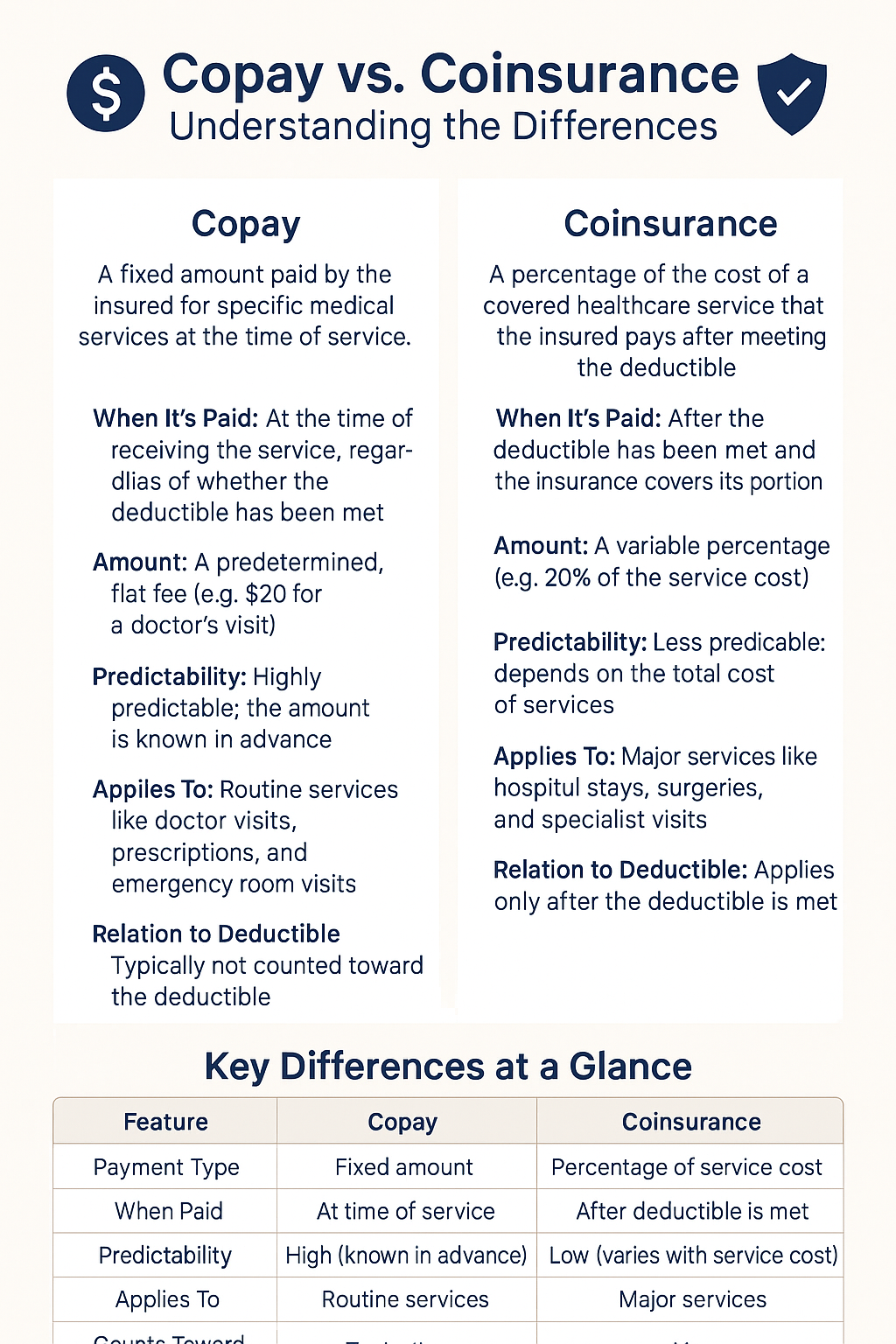Copay is a fixed amount you pay for a healthcare service—like $25 for a doctor visit—while coinsurance is a percentage of the total cost of care you pay after meeting your deductible—like 20% of a $1,000 procedure. Both are forms of cost-sharing but work very differently.
Understanding Copay: Fixed, Predictable Payments
Copay (or copayment) is a set fee you pay for medical services or prescriptions. It doesn’t change, no matter how expensive the service is. For example:
- $20 for a primary care visit
- $50 for a specialist
- $10 for generic medications
📌 Key Copay Highlights:
- Fixed dollar amount
- Paid at the time of service
- Used mostly for routine care
- Easy to budget for
Understanding Coinsurance: A Percentage-Based Cost
Coinsurance is a cost-sharing percentage you pay after meeting your deductible. If your coinsurance rate is 20%, and a procedure costs $2,000, you’ll pay $400 while your insurer pays the remaining 80%.
📌 Key Coinsurance Highlights:
- Based on a percentage of the bill
- Applies after the deductible
- Tends to affect costlier procedures
- Can lead to higher out-of-pocket costs
Side-by-Side Comparison Chart
| Feature | Copay | Coinsurance |
|---|---|---|
| What it is | Fixed dollar amount | Percentage of the cost |
| When it applies | Usually before deductible | After deductible is met |
| Amount type | Predictable and consistent | Varies with service cost |
| Example | $25 for doctor visit | 20% of a $1,000 surgery = $200 |
| Best for | Routine or minor care | Major or expensive procedures |
| Budget predictability | High | Low |
Real-Life Example: Making It Clear
Imagine you visit your primary care doctor:
- With copay, you pay a flat $30, regardless of total service cost.
- With coinsurance, if the visit costs $200 and you’ve met your deductible, you may owe 20%—or $40.
Why It Matters for Providers
Healthcare providers need to explain these cost types clearly to avoid confusion and improve patient satisfaction.
✅ Tips for Providers:
- Use plain language during check-in
- Display cost estimate charts
- Train staff on insurance literacy
- Clarify if a service is subject to coinsurance or copay
FAQs by Providers
A: Explain whether the charge is due to coinsurance and if their deductible has been met.
A: Yes, especially in tiered insurance plans—copay for the visit, coinsurance for additional services.
A: Not always. Some plans may use only copays, others coinsurance, and many use both depending on the service type.

